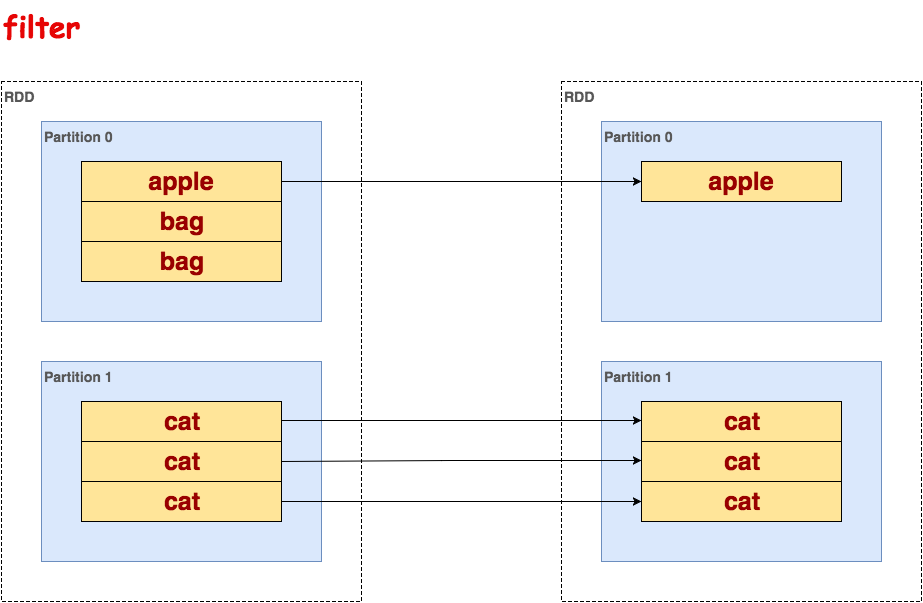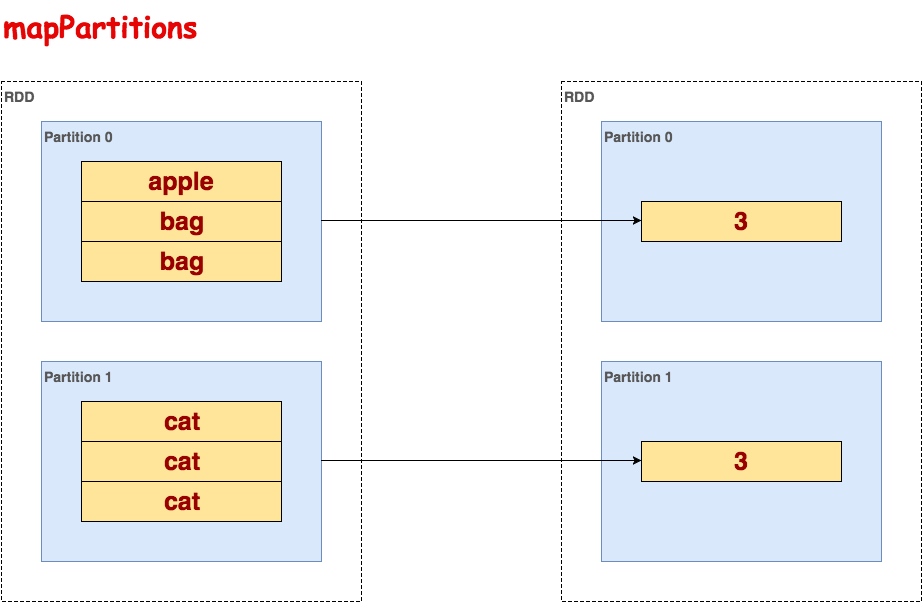初识spark,需要对其API有熟悉的了解才能方便开发上层应用。本文用图形的方式直观表达相关API的工作特点,并提供了解新的API接口使用的方法。例子代码全部使用python实现。
1. 数据源准备
准备输入文件:
$ cat /tmp/in
apple
bag bag
cat cat cat启动pyspark:
$ ./spark/bin/pyspark使用textFile创建RDD:
>>> txt = sc.textFile("file:///tmp/in", 2)查看RDD分区与数据:
>>> txt.glom().collect()
[[u'apple', u'bag bag'], [u'cat cat cat']]2. transformation
flatMap
处理RDD的每一行,一对多映射。
代码示例:
>>> txt.flatMap(lambda line: line.split()).collect()
[u'apple', u'bag', u'bag', u'cat', u'cat', u'cat']示意图:

map
处理RDD的每一行,一对一映射。
代码示例:
>>> txt.flatMap(lambda line: line.split()).map(lambda word: (word, 1)).collect()
[(u'apple', 1), (u'bag', 1), (u'bag', 1), (u'cat', 1), (u'cat', 1), (u'cat', 1)]示意图:

filter
处理RDD的每一行,过滤掉不满足条件的行。
代码示例:
>>> txt.flatMap(lambda line: line.split()).filter(lambda word: word !='bag').collect()
[u'apple', u'cat', u'cat', u'cat']示意图:

mapPartitions
逐个处理每一个partition,使用迭代器it访问每个partition的行。
代码示例:
>>> txt.flatMap(lambda line: line.split()).mapPartitions(lambda it: [len(list(it))]).collect()
[3, 3]示意图:

mapPartitionsWithIndex
逐个处理每一个partition,使用迭代器it访问每个partition的行,index保存partition的索引,等价于mapPartitionsWithSplit(过期函数)。
代码示例:
>>> txt.flatMap(lambda line: line.split()).mapPartitionsWithIndex(lambda index, it: [index]).collect()
[0, 1]示意图:

sample
根据采样因子指定的比例,对数据进行采样,可以选择是否用随机数进行替换,seed用于指定随机数生








 最低0.47元/天 解锁文章
最低0.47元/天 解锁文章














 1621
1621











 被折叠的 条评论
为什么被折叠?
被折叠的 条评论
为什么被折叠?








